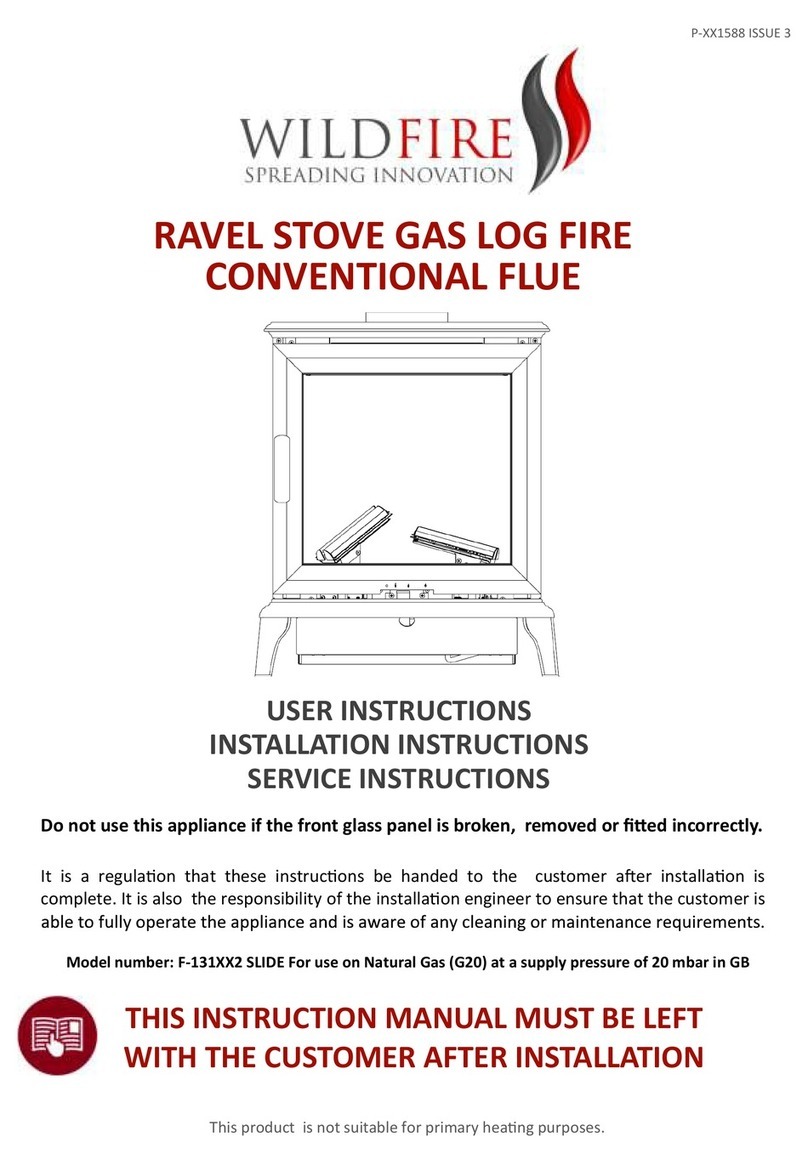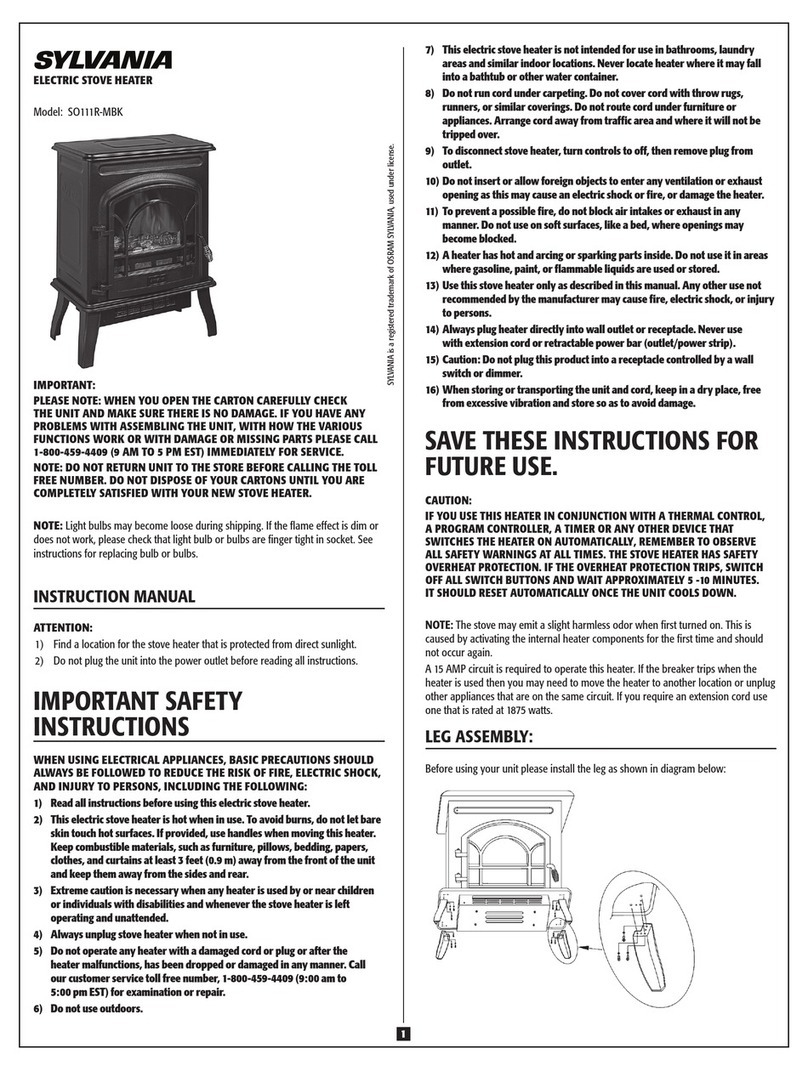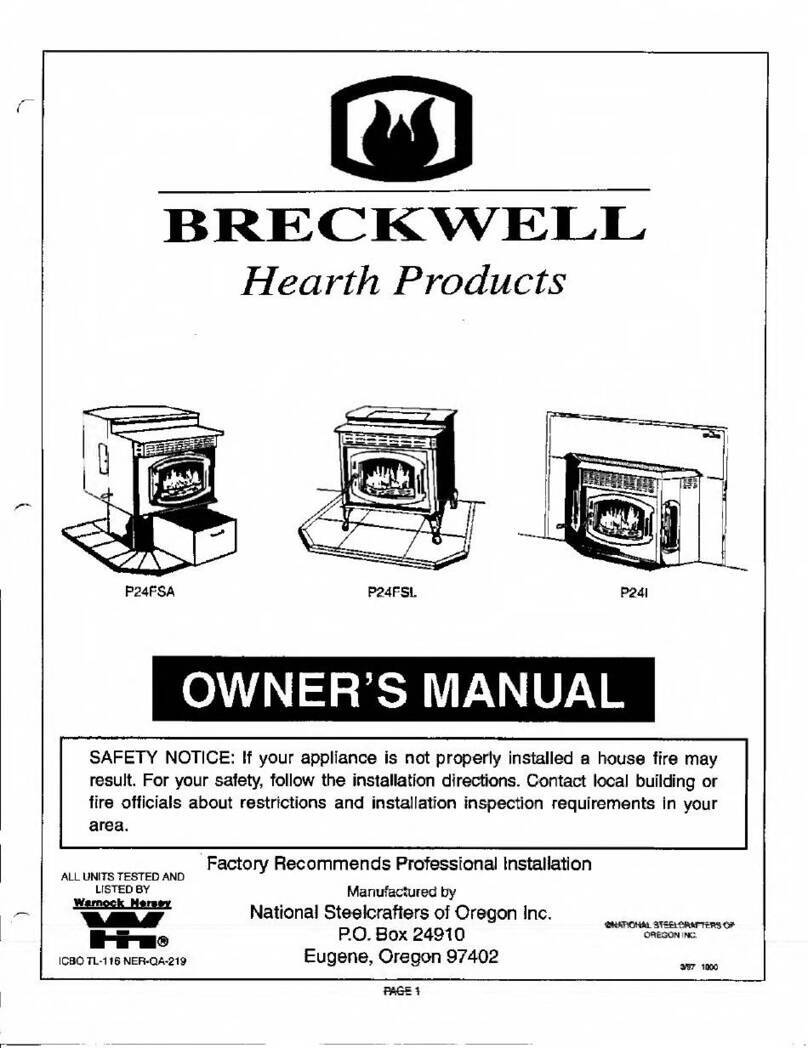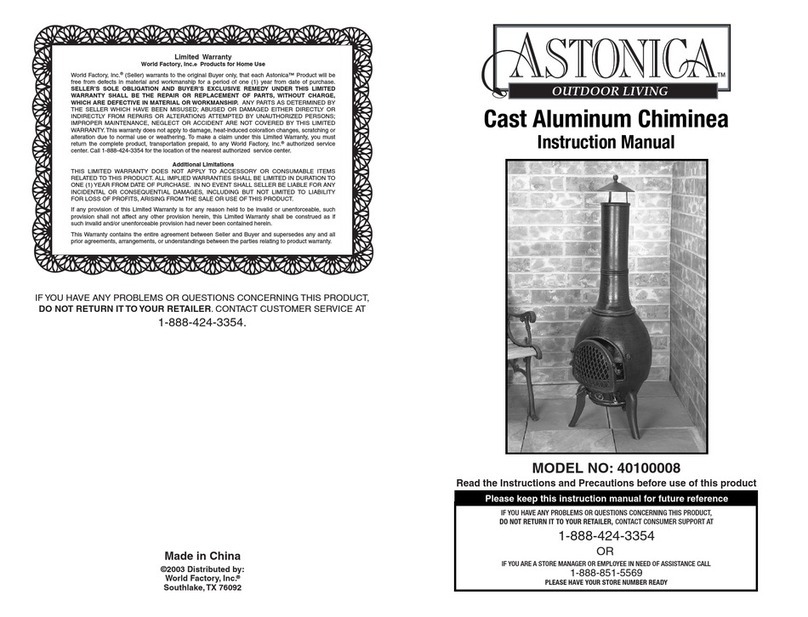18 19
Programming the Timer
• Press TIMER
TIMERTIMER
TIMER until P1
P1P1
P1
flashes (period 1, heating cycle on)
• Set the time for the beginning of he first heating period by pressing () for hour
and () for minute
• Press TIMER
TIMERTIMER
TIMER again; and P1
P1P1
P1
appears
• Set the timer for end of the first heating period
• Press TIMER
TIMERTIMER
TIMER again to set the second heating period P2
P2P2
P2
(heat off)
• Store both heating periods by pressing TIMER
TIMERTIMER
TIMER again
• If only one heating period is desired, program the same time for P2 and P2 as for
P1 and P1
Manual Mode (MAN in display) for Manual Flame Height Adjustment
• Press () to turn on the fire (main burner) or to increase flame height
• Press () to decrease flame or to turn down to pilot
• To incrementally increase or decrease the flame height, lightly tap either the () or ()
button
• The send
sendsend
send symbol appears in the upper left corner of the display when either large
button is depressed
• The LED of the receiver flashes when knob B of the valve reaches the end stops
Automatic Mode (Auto in display) for Temperature Control
• Briefly press AUTO
AUTOAUTO
AUTO The set temperature will appear briefly before the display reverts to
the room temperature
Timer Mode (Timer in Display)
• During heating periods P1
P1P1
P1
and P2
P2P2
P2
the temperature is controlled in the same
manner as in automatic mode
• When the timer program turns to (heating cycle off), the motor will then valve to pilot
and there is no temperature control This minimises battery consumption
• You may press AUTO
AUTOAUTO
AUTO to verify the set temperature and then press TIMER
TIMERTIMER
TIMER to return to
timer mode
• You may press either the () or () button from any mode for manual override
• To prolong battery life, we recommend switching the transmitter to manual mode and
turning the fire to pilot with the () button before turning the appliance off If the
transmitter is left in automatic or timer mode, the batteries will continue to be used when
the appliance is off
Changing the Battery
• If BATT
BATTBATT
BATT appears in upper right hand corner of the display or if the LED of the receiver
becomes faint, please change the battery from transmitter or receiver If the batteries
lose power, the flame height can be adjusted by manually turning Knob B
DATA INFORMATION
The temperature is controlled by activating the motor for a specific length of time to adjust the
appropriate flame height The time is calculated by the transmitter and depends on variables
such as room size, heater capacity, battery power, etc
Therefore, a few cycles are necessary before optimum is achieved If a low flame is
sufficient to provide enough warmth to the room, then the appliance will cycle between low
fire and off
This allows longer periods with the flame on and provides a more uniform room temperature
The stove is fitted with a spillage monitoring system which senses any excess temperature
due to a flue restriction or blockage In this event the gas supply is automatically turned off
Should this occur turn the control knob to the OFF
OFFOFF
OFF position and wait approximately 10 minutes
for the switch to automatically reset Re-light the stove as described in OPERATING THE
STOVE section (page 15) If the stove repeatedly shuts itself off, DO NOT
DO NOT DO NOT
DO NOT use the stove and
have the flue system checked by a qualified person
The spillage monitoring system is not adjustable and must not be put out of action
Ensure that the stove is turned off before cleaning and is cold
DO NOT
DO NOT DO NOT
DO NOT use abrasive cleaning agents
The stove is supplied with ceramic coal that should only be cleaned and arranged by a
qualified person in accordance with the Installation Instructions
The Data Label is located at the rear of the stove
It is essential that the stove is regularly serviced, and the flue system checked by a qualified
person
SPILLAGE MONITORING SYSTEM
CLEANING
SERVICING
Please note, the placement of the transmitter (temperature sensor) is important to
assure proper temperature regulation Generally, a more constant temperature
will be assured, if the transmitter is not too far from the gas appliance Before
switching to AUTO
AUTOAUTO
AUTO or TIMER
TIMERTIMER
TIMER Mode, press either button () or () to verify
the reception (when the send symbol appears in the transmitter display, the
receiver’s LED must illuminate) For the AUTO
AUTOAUTO
AUTO or TIMER
TIMERTIMER
TIMER mode to function
correctly, the transmitter must remain within range of the receiver The transmitter
should not be used in very close proximity to the receiver (less than 1m/3ft)
as this could block the motor when the knob reaches the end points of its
turning radius The knob must then be turned manually to free the blockage
It is recommended to turn the combination control either to the OFF
OFFOFF
OFF or PILOT
PILOTPILOT
PILOT
position if the appliance is left unattended for longer periods (i e away), so
that it cannot receive commands from the remote transmitter Exercise caution
when leaving the appliance unattended, in exceptional cases sound waves
from sources other than the transmitter can cause changes in flame height
adjustment






























